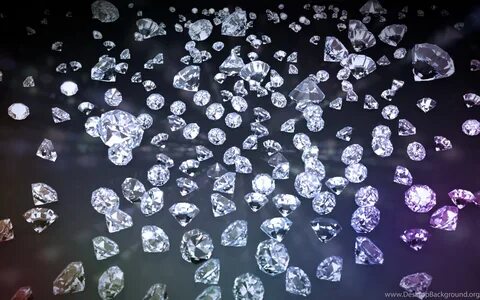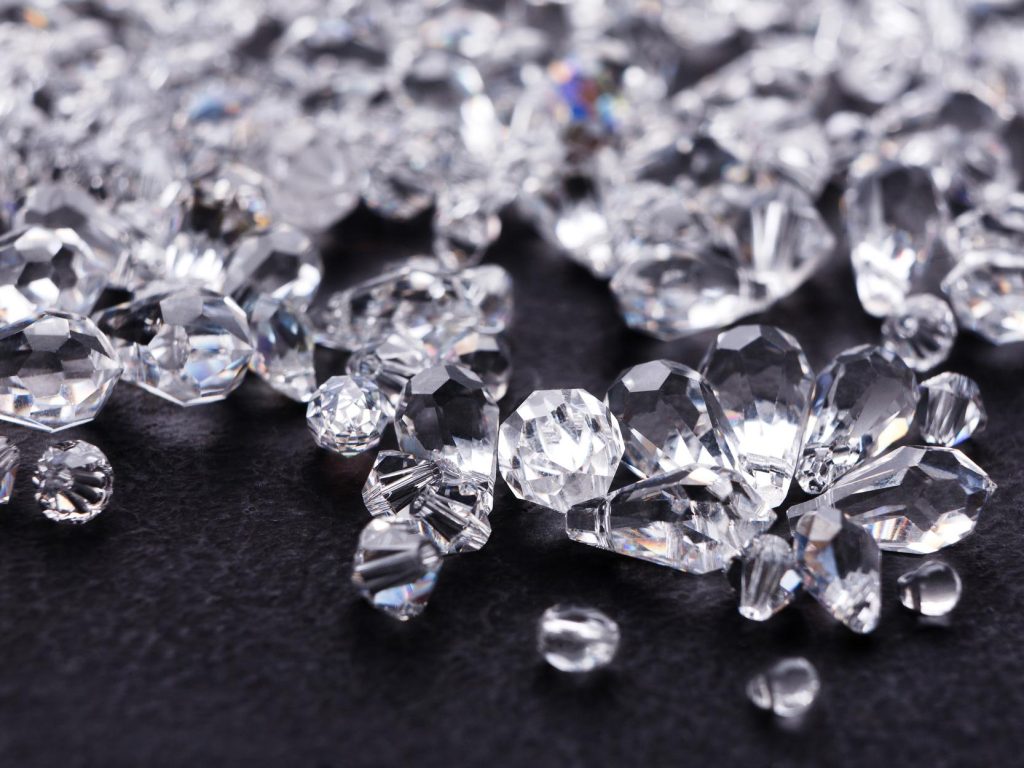Diamonds
Products
Diamonds
Mining and Exploration
Exploration is the first step in the diamond mining process. Geologists use various methods to identify potential diamond deposits, such as aerial surveys and geological mapping. Once a potential site is identified, the area is further explored to determine the size and quality of the deposit.

EPA Classifications
Extraction involves removing the diamond-bearing ore from the ground. It is typically done using open-pit or underground mining methods, depending on the location and type of deposit. The ore is then hauled to a processing plant, which is crushed and sorted to separate the diamond-bearing material from the waste rock. Processing involves further refining the diamond-bearing material to produce high-quality diamonds. It uses various techniques, including cutting, polishing, and grading. The final product is then sold to retailers and wholesalers around the world.
While diamond mining can be lucrative, it significantly impacts the environment and local communities. Many mining operations have been criticized for using toxic chemicals, deforestation, and displacement of indigenous peoples. As such, it is essential that diamond mining is conducted responsibly and sustainably to minimize these negative impacts.
Manufacturing the Diamonds
The manufacturing process of diamonds is truly fascinating. These precious gems are constructed deep within the Earth’s mantle and are brought to the surface through volcanic activity. Once extracted, they undergo a rigorous process of cutting, polishing, and grading to ensure they meet the highest standards for quality and clarity. It’s incredible to think about how much time and effort goes into creating something so small and beautiful.
Sourcing And Trading
It starts with diamond mining, where rough diamonds are extracted from the Earth. These rough diamonds are sorted, graded, and sold to diamond cutters and polishers. The cut and polished diamonds are then sold to wholesalers and retailers who sell the diamonds to consumers.
Diamonds – A Wise Investment
Investing in diamonds can be a wise financial decision for those looking to diversify their portfolio. Diamonds are a rare and valuable commodity that has maintained its worth over time, making them a stable investment option. Unlike stocks and bonds, the value of diamonds is not heavily influenced by market fluctuations, making them a dependable long-term investment. Additionally, diamonds are a tangible asset that can be easily stored and transported, providing security that other investments may not offer. Whether you’re a seasoned investor or just beginning, adding diamonds to your portfolio can be a smart move that pays off in the long run.
Why Consider Partnering with PROSPRINCA ENERGY for Diamonds?
If you are looking for a reliable partner for your diamonds needs, we recommend considering “PROSPRINCA ENERGY” and it’s JOINT VENTURE GLOBAL PARTNERS. The company has unparalleled access to allocation holders, refineries, suppliers, and exit buyers, ensuring customers receive their desired products promptly and at competitive prices. We are one of the major global diamond suppliers and traders at the moment. Our commitment to ethical practices and sustainability makes us a trustworthy choice for your diamonds trading, sourcing, and mining needs.
Products
Diamond
“PROSPRINCA ENERGY” and its JOINT VENTURE GLOBAL PARTNERS are primed to cater to all your gold and precious metal sourcing requirements, providing direct and on-site solutions that you can rely on. Our extensive expertise in gold trading is built upon decades of active engagement across the entire precious metals spectrum – from extraction and refining to strategic marketing and global distribution.
Crude oil is also crucial as a raw chemical ingredient. The technology relies on it and is available in nearly everything we use today, from cell phones and car parts to wind turbines. Because of its raw and unrefined state, crude oil possesses various consistencies and densities. It spans from a very thin, volatile fluid to semi-solid and viscous material. Despite this, crude oil is celebrated as “black gold,” and ranges from a dazzling golden yellow to a pitch-black hue.

EPA Classifications
Crude oil is considered unrefined petroleum amassed deep in the earth’s crust. Being a raw natural resource, it is obtained through drilling and refined into products: jet fuel, gasoline, distillates such as diesel fuel and heating oil, lubricating oils, etc. The most popular use of crude oil is to produce fuel for different vehicles and machines like generators and heaters. It’s the world’s most in-demand fossil fuel, which is traded in more than 160 varieties.
Crude oil is also crucial as a raw chemical ingredient. The technology relies on it and is available in nearly everything we use today, from cell phones and car parts to wind turbines. Because of its raw and unrefined state, crude oil possesses various consistencies and densities. It spans from a very thin, volatile fluid to semi-solid and viscous material. Despite this, crude oil is celebrated as “black gold,” and ranges from a dazzling golden yellow to a pitch-black hue.
EPA Classifications
According to the Environmental Protection Agency (EPA), crude oil typically exists in four classes: Class A, Class B, Class C, and Class D. These are essential to gain a better understanding of general toxicity as well as physical changes.
Class A: It features the majority of refined products along with an assortment of high-quality crude oils. Although Class A is highly valued, it can be extremely hazardous to human, animal and environmental health.
Class B: These oils have the consistency of wax and oil and are low-level toxic. They adhere to surfaces with a greater tenacity degree than Class A oils. As the temperature increases, they will likely seep through porous layers or surfaces.
Class C: Such crude oils are often dark brown or black in color, have a density similar to water’s, and have a proneness to sink. Even while Class C crude oil is the least poisonous, it is nevertheless capable of causing damage to wildlife.
Class D: In general, Class D oils have a dark black or brown color, and if be, they have the potential to coat surfaces almost permanently. These mainly include residual oils, heavy crude oils, weathered oils, and select oils with a high paraffin content and are classified as a toxicity class II-moderately toxic
Why Partner with PROSPRINCA ENERGY for Crude Oil?
Inevitably, “PROSPRINCA ENERGY” and it’s JOINT VENTURE GLOBAL PARTNERS are the market leader in Middle Distillates. We are involved in trading a diverse selection of crude oil grades and types hailing from all over the world. We source our significant volumes of crude oil from the Far East, the Middle East, and North Africa. As an international crude oil supplier, we continue to leverage our efforts in the pipeline industry throughout the United States. Additionally, Prosprinca’s Crude Oil department strives to expand the turnover of its storage facilities with efficiency, expertise, and transparency.
Products
Diamond
“PROSPRINCA ENERGY” and its JOINT VENTURE GLOBAL PARTNERS are primed to cater to all your gold and precious metal sourcing requirements, providing direct and on-site solutions that you can rely on. Our extensive expertise in gold trading is built upon decades of active engagement across the entire precious metals spectrum – from extraction and refining to strategic marketing and global distribution.
Crude oil is also crucial as a raw chemical ingredient. The technology relies on it and is available in nearly everything we use today, from cell phones and car parts to wind turbines. Because of its raw and unrefined state, crude oil possesses various consistencies and densities. It spans from a very thin, volatile fluid to semi-solid and viscous material. Despite this, crude oil is celebrated as “black gold,” and ranges from a dazzling golden yellow to a pitch-black hue.



